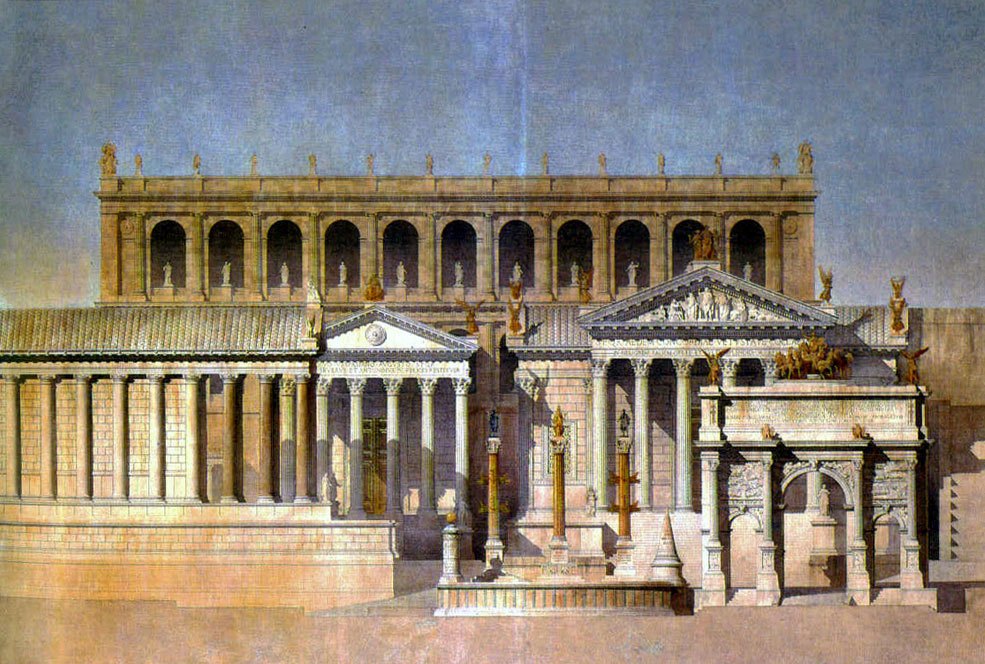- Tabularium was a repository for state archives built under the auspices of Q. Lutatius Catulus. consul in 78 BC
- Best preserved building from the Republican period
- Wholly done in the opus quadratum style (2 Roman feet high and 2 Roman feet wide and 4 Roman feet long)
- They are laid in alternate courses of headers and stretchers (emplecton), with a thin layer of cement
- It consisted of a substructure with 2 floors above it
- There was a door in the substructure that led to 67 stairs, which afforded access from the forum to the upper floor of the building
- Second floor: the front of this corridor was an arcade of the Doric order, with engaged columns of peperino. There were eleven arches, 7.50 meters in height and 3.70 in width, all but one of which have been walled up
- This arcade afforded an excellent means of communication between the two portions of the Capitoline, and formed a striking architectural terminus for the Forum
- There was a second arcade (third floor) above this one
- Its effect, however, was sadly marred by the erection of the temple of Vespasian and the Porticus Deorum Consentium, and by the restoration and enlargement of the temple of Concord.
- Above this arcade the palazzo is built, but there is little doubt that originally there was a second arcade above the first, probably of another order. We can tell very little about the arrangement of the upper and west part of the building; but some rooms and passages still remain, especially one large hall behind the existing arcade
Platner, SB. Platner’s Topography and Monuments of ancient Rome. Second Edition. Allyn and Bacon. Boston. Norwood Press JS Cushing Co.–Berwick and Smith Co. Norwood, Mass. 1904, 1911. Pages 306-308.
Political and military implications
- Because there is nothing written about the Tabularium in existing Roman texts, we have to infer that as the machinery of government became more complex and as the economy evolved, the need for recordkeeping increased; the Tabularium was a response to that need

